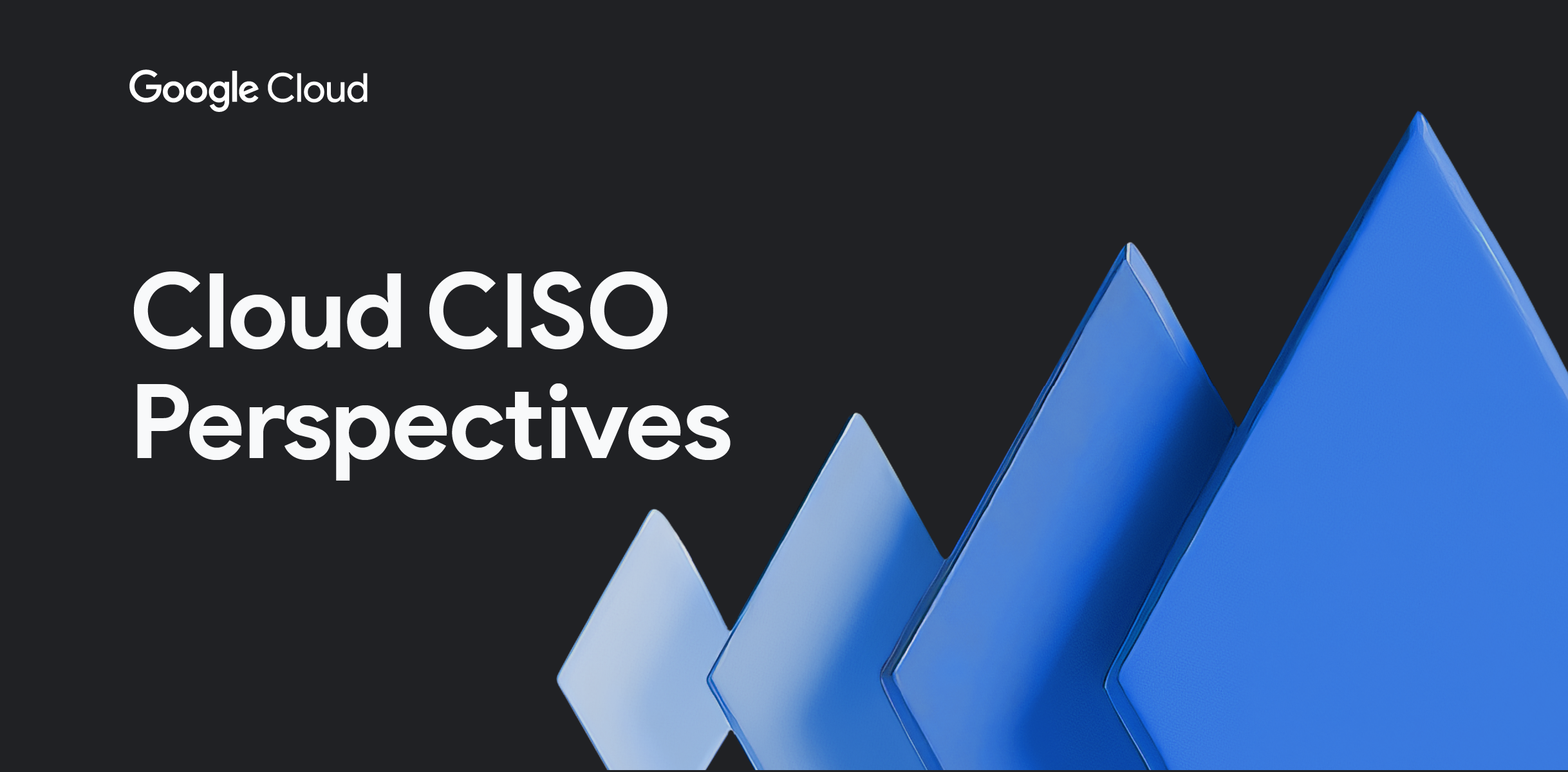Welcome to the first Cloud CISO Perspectives for November 2024. Today I’m joined by Andy Wen, Google Cloud’s senior director of product management for Google Workspace, to discuss a new Google survey into the high security costs of legacy tech.
As with all Cloud CISO Perspectives, the contents of this newsletter are posted to the Google Cloud blog. If you’re reading this on the website and you’d like to receive the email version, you can subscribe here.
–Phil Venables, VP, TI Security & CISO, Google Cloud
- aside_block
- <ListValue: [StructValue([('title', 'Get vital board insights with Google Cloud'), ('body', <wagtail.rich_text.RichText object at 0x3ed069c7d4f0>), ('btn_text', 'Visit the hub'), ('href', 'https://cloud.google.com/solutions/security/board-of-directors?utm_source=cloud_sfdc&utm_medium=email&utm_campaign=FY24-Q2-global-PROD941-physicalevent-er-CEG_Boardroom_Summit&utm_content=-&utm_term=-'), ('image', <GAEImage: GCAT-replacement-logo-A>)])]>
Confronting the high security cost of legacy tech
By Phil Venables, VP, TI Security & CISO, Google Cloud, and Andy Wen, senior director, product management, Google Workspace
From a business perspective, it’s easy to understand why many organizations continue to rely on outdated technology. Replacing older systems can be expensive, but relying on them comes with hidden costs that can far outstrip the benefits.
Legacy technology can greatly increase the business and security risks that an organization will face, a serious concern given that the global average total cost of a security breach in 2024 was $4.88 million. Despite the availability of a plethora of more modern solutions, we’re still seeing too many organizations rely on defenses that were designed for the desktop era, according to a new Google Workspace global cyber security survey of more than 2,000 security and IT decision-makers.

Phil Venables, VP, TI Security & CISO, Google Cloud
The numbers paint a dire picture of the security impact of operating legacy systems:
- 71% said that legacy technology has left organizations less prepared for the future.
- 63% believe that their organization’s technology landscape is less secure than it was in the past.
- More than 66% told us that their organizations are investing more time and money than ever in securing their environments — but still experience costly security incidents.
- 81% of organizations experience at least one security incident per year.
- Organizations experience eight security incidents on average per year.
We know many security leaders have convinced the business to invest in more security tools, because the survey also found that 61% of organizations are using more security tools than they did two years ago. Yet while more than two-thirds of organizations are investing more time and money in securing their environments, many are still experiencing expensive security incidents.

Andy Wen, senior director, product management, Google Workspace
Environments with more security tools often attempt to compensate for legacy platforms that continue to be vulnerable to security incidents. Meanwhile, 81% of security leaders believe cloud-first platforms are safer than legacy platforms.
- Organizations with 10 or more security tools reported an average of 14 security incidents per year, with 34% of them spending more than $250,000 on incidents per year.
- Organizations with fewer than 10 tools reported an average of six incidents per year, with 19% of them spending more than $250,000 on incidents per year.
“The solution is not more security tools, but more secure tools,” said CISA Director, Jen Easterly, at her mWISE Conference keynote in September.
We have also made this point often. To be truly resilient in today’s security landscape, organizations must consider an IT overhaul and rethink their strategy toward solutions with modern, secure-by-design architectures that nullify classes of vulnerabilities and attack vectors.
It may be daunting to take on an overhaul, especially for large organizations, but security leaders need to look at investing in a cloud-first solution to be resilient. The change can be made in small steps to minimize disruption and evaluate return on investment, such as using Chrome Enterprise for secure browsing and providing Google Workspace to specific teams.
The bottom line is that adopting modern technology can help eliminate entire classes of threats, as well as improve business outcomes.
We’d like to highlight three customer interactions that underscore organizational value gained by modernizing. Organizations need a centralized solution that can evolve, especially as attacks continue to increase in quantity and sophistication. We recently did some work with the cybersecurity company Trellix, which did a complete overhaul of its security infrastructure.
Trellix was running into issues where its old software stack felt stagnant and didn’t connect into new things they were doing or building. These older solutions made it hard to control where data was sitting and who was accessing it. They’ve since fully migrated to Google Workspace, adopted the Zero Trust capabilities we’ve built in, and augmented them with their own security solutions, including a security operations console, email security, and endpoint protection.
Employees can now chat, email, view files, edit documents, and join meetings from their device of choice without worrying about security and access permissions. All these capabilities live within the same platform, making it easier and simpler for security admins to oversee data safety with features like endpoint management and Zero Trust access controls in Workspace — without slowing down employee collaboration.
Similarly, the city of Dearborn, Mich., replaced its legacy email solution. After making the switch to Gmail, users noticed a meaningful decrease in spam, phishing, and malware, which helped reduce their cybersecurity risks.
Humana’s dilemma was driven by a legacy suite of desktop-based office applications that its IT team needed to spend 70% of its time maintaining. Humana’s IT team rolled out Google Workspace to 13,000 Humana employees in the field and in the office in four months, migrating 22 terabytes of data. Workspace’s built-in security features and browser-based apps saved the team time and reduced costs, and also led to a steady reduction in help desk tickets during and after rollout.
The bottom line is that adopting modern technology can help eliminate entire classes of threats, as well as improve business outcomes. We encourage you to read the full Google Workspace report on why incremental fixes no longer work.
For more leadership guidance from Google Cloud experts, please see our CISO Insights hub.
- aside_block
- <ListValue: [StructValue([('title', 'Join the Google Cloud CISO Community'), ('body', <wagtail.rich_text.RichText object at 0x3ed069c7d970>), ('btn_text', 'Learn more'), ('href', 'https://rsvp.withgoogle.com/events/ciso-community-interest?utm_source=cgc-blog&utm_medium=blog&utm_campaign=2024-cloud-ciso-newsletter-events-ref&utm_content=-&utm_term=-'), ('image', <GAEImage: GCAT-replacement-logo-A>)])]>
In case you missed it
Here are the latest updates, products, services, and resources from our security teams so far this month:
- Join our upcoming Security Talks to unlock the Defender’s Advantage: Our next Security Talks is coming on Nov. 19, and will focus on the Defender’s Advantage. This free, day-long virtual event is packed with insights and strategies to help you proactively secure your cloud environment. Register today.
- Cyber risk top 5: What every board should know: Boards should learn about security and digital transformation to better manage their organizations. Here’s five top risks they need to know — and prepare for. Read more.
- Mandatory MFA is coming to Google Cloud. Here’s what you need to know: To help keep our customers secure, starting in 2025 we will require them to use MFA when accessing Google Cloud. Read more.
- Google Cloud expands CVE program: As part of our commitment to security and transparency on vulnerabilities found in our products and services, we now will issue CVEs for critical Google Cloud vulnerabilities. Read more.
- Our 2025 Forecast report: Get ready for the next year in cybersecurity with our 2025 Forecast report, now available. Read more.
- From AI to Zero Trust, Google Cloud Security delivers comprehensive public sector solutions: Google Cloud Security is committed to helping government agencies and organizations strengthen their defenses, and we recently made several announcements at the Google Public Sector Summit. Read more.
- FedRAMP High development in the cloud: Code with Cloud Workstations: A Forrester Total Economic Impact™ (TEI) study found that Google Cloud Workstations enhance consistency, agility, and security while reducing costs and risks. Read more.
Please visit the Google Cloud blog for more security stories published this month.
- aside_block
- <ListValue: [StructValue([('title', 'Learn something new'), ('body', <wagtail.rich_text.RichText object at 0x3ed069c7dcd0>), ('btn_text', 'Learn more'), ('href', 'https://www.youtube.com/watch?v=l_pEengeFwM'), ('image', <GAEImage: GCAT-replacement-logo-A>)])]>
Threat Intelligence news
- (In)tuned to take-overs: Abusing Intune permissions for lateral movement and privilege escalation: Learn how the Mandiant Red Team was able to move laterally from a customer’s on-premises environment to their Microsoft Entra ID tenant, and obtained privileges to compromise existing Entra ID service principals installed in the tenant. Also learn how to defend against it. Read more.
- Flare-On 11 Challenge solutions: The latest Flare-On challenge is over, and it proved a doozy: Only 275 players out of 5,300 completed all 10 stages. Read more.
Please visit the Google Cloud blog for more threat intelligence stories published this month.
Now hear this: Google Cloud Security and Mandiant podcasts
- Gen AI security: Unseen attack surfaces and pentesting lessons: What’s the current state of gen AI security? From common mistakes to novel attack surfaces to unique challenges, podcast hosts Anton Chuvakin and Tim Peacock discuss with Ante Gojsalic, co-founder and CTO, SplxAI, today’s gen AI security concerns and their potential impact on tomorrow’s tech. Listen here.
- Get the Google Security Operations perspective on SIEM and security data lakes: What’s a disassembled SIEM, and why you should care: Travis Lanham, uber tech lead for Security Operations Engineering, Google Cloud, goes SIEM-deep with Anton and Tim. Listen here.
To have our Cloud CISO Perspectives post delivered twice a month to your inbox, sign up for our newsletter. We’ll be back in two weeks with more security-related updates from Google Cloud.

